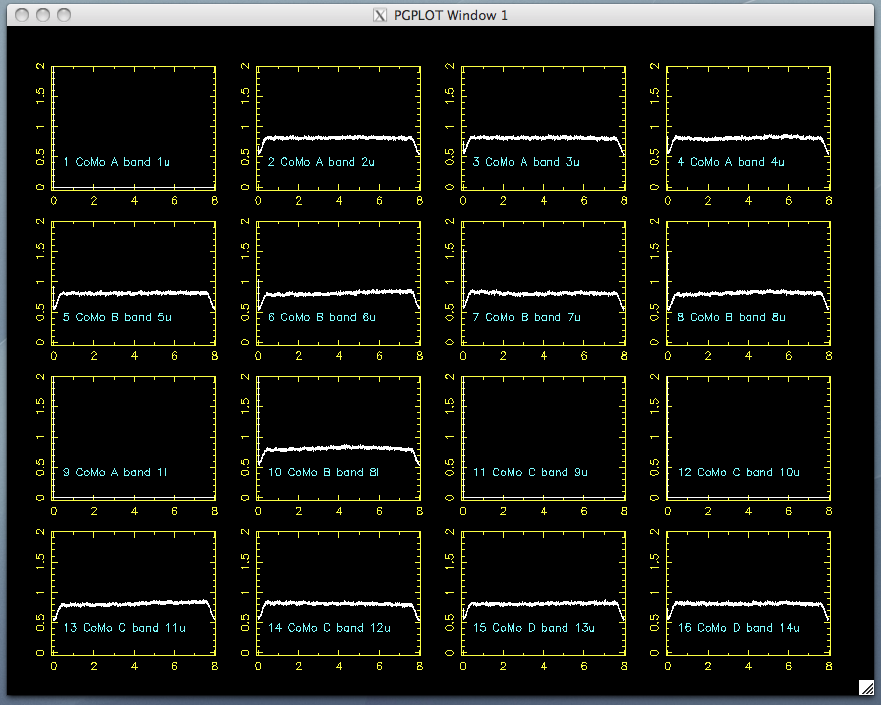User Tools
Sidebar
hardware:dbbc.currentissues
This wiki is not maintained! Do not use this when setting up AuScope experiments!
This is an old revision of the document!
DBBC-HB
21 Feb 2011: This unit has been returned to MPI for repair
- Backplane issue has been fixed with new PCI7200 card.
- The time difference between the PPSMON output and the maser PPS is drifting very rapidly (~80 milliseconds/second). The “PPS” led (1st from the bottom) is not in sync with the input PPS. However, the “Board Write Enable” LED (4th from the bottom) is synchronised. The PPS is of adequate amplitude (+4 V if the input is 50 ohms) as is the 10 MHz input. Both 10 MHz and 1PPS are from the Vremya maser. The drift is obvious when looking at the input PPS and the PPSMON on an oscilloscope. I have had a look at the system clock with a spectrum analyzer and the 1024 MHz peak is present. It appears to be stronger from DBBCHB than from Auscope3 (+21 dB in a 10 MHz span compared to +16 dB from Auscope3) and also appears to have two secondary peaks in the spectrum at 1022 and 1026 MHz (both at amplitudes of -20 dB). These secondary peaks do not appear in the System Clock output of Auscope3.
DBBC-AUSCOPE2
21 Feb 2011: This unit is currently in Katherine but will be sent to Yarragadee
- Timing issues has been resolved.
- Missing channels - Channel 15 seems to be absent. The problem is not fixed by power cycling the electronics. Other channels intermittently appear distorted and full of weak, spurious tones (1-8).
- dbbcifc always reads slightly low (52000-54000). We have switched CoMos without make any difference and amplifying the signal does not affect this.
- This DBBC is currently powered on with 10 MHz & 1 PPS applied but no input IFs.
- CoMos do not seem to have good isolation on the input selector switch. Inputs without any attached IFs can still read as having significant total power.
DBBC-AUSCOPE3
21 Feb 2011: This unit is currently in use at Hobart
- Currently in use for IVS observations and seems to be performing reliably although it is necessary to monitor the delay through the system as it can sometimes drift. The channel drop-outs and unusual bandpass shapes described below seem not to occur often. It looks like performance has improved since the front perspex cover was removed from the front of the unit. Perhaps ventilation has been a problem.
- Performance seems ok except that channels 3 and 4 intermittently drop out, with recorded data consisting solely of -1 (1-bit recording). There are no indications of this error state in the LEDs of the front panel. NOTE: as of 4 Nov 2010, not always channels 3 and 4. This time channels 1, 9, 11 and 12 dropped out:
 .
.
On another occasion channels 1, 2, 9 and 11 dropped out while channels 12 and 14 looked strange:
- dbbcifd power always reads slightly low (52000-54000). We have switched CoMos without make any difference and amplifying the signal does not affect this.
/home/www/auscope/opswiki/data/attic/hardware/dbbc.currentissues.1319611032.txt.gz · Last modified: 2012/01/10 21:47 (external edit)

